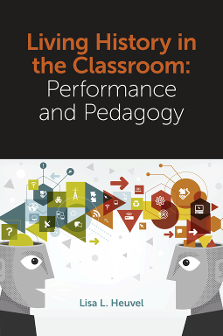
Index
Living History in the Classroom
ISBN: 978-1-78973-596-3, eISBN: 978-1-78973-595-6
Publication date: 19 October 2020
Citation
Adkisson, C.Y., Adkisson, R., Arnold, S.D., Cross, J.B., Fetsko, W.J., Green, T.D.R., Holmes, V.G., Howard, C.L., Paska, L.M., Potter, T., Swanson, J.B., Ness Swanson, K.L., Tucker, D.L. and Van Eck, D.G. (2020), "Index", Heuvel, L.L. (Ed.) Living History in the Classroom, Emerald Publishing Limited, Leeds, pp. 237-242. https://doi.org/10.1108/978-1-78973-595-620201017
Publisher
:Emerald Publishing Limited
Copyright © 2020 Emerald Publishing Limited
INDEX
- Prelims
- Introduction: “Mr. Jefferson, Meet the Digital Natives”
- Chapter 1 Making History
- Chapter 2 The Value of the Story: Where Learning Meets Understanding
- Chapter 3 Bringing History into the Classroom
- Chapter 4 Traveling with a Rabbit: Finding the Hook to Engage Young Readers
- Chapter 5 Implementing Storytelling and Interpretation in Your Classroom
- Chapter 6 Historical Character Portrayal: Breaking It Down
- Chapter 7 A Teaching Model of Character, Content, and Pedagogy
- Chapter 8 Becoming Hi-Story-Cal
- Chapter 9 Building Your Character
- Chapter 10 Stuff, Not Nonsense: Using Material Culture in Historical Research and Interpretation
- Chapter 11 Who Is in Charge? Using and Creating Media in the History Classroom
- Chapter 12 Making Connections
- Chapter 13 Postscript
- Index